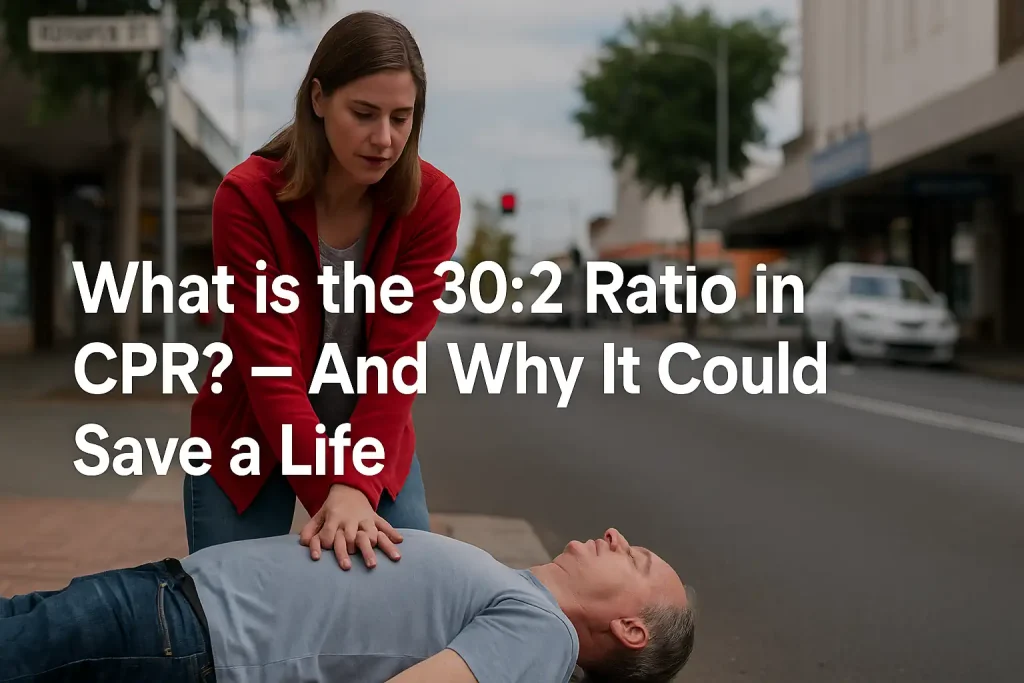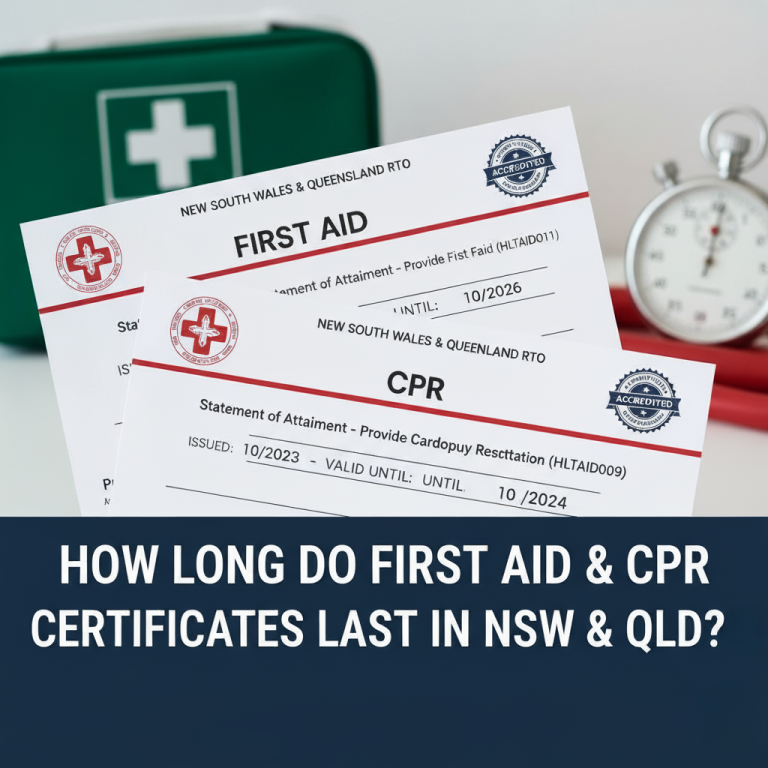Training and Assessment Delivered on Behalf of Allens Training Pty Ltd RTO 90909
What is the 30:2 Ratio in CPR? – And Why It Could Save a Life

Key Takeaway: The 30:2 ratio in CPR—30 chest compressions followed by 2 rescue breaths—is a lifesaving formula designed to keep oxygen flowing to the brain and heart until help arrives. It’s simple, proven, and something anyone can learn to do.
When someone’s heart stops, knowing what to do in the first few moments can save a life. CPR, or cardiopulmonary resuscitation, is a simple yet powerful skill that anyone can learn. One of the key concepts in CPR is the 30:2 ratio – a number that might seem random, but is actually backed by years of medical research.
If you’ve ever wondered what it means or why it’s important, let’s break it down.
Table of Contents
The Basics: What is the 30:2 Ratio?
The 30:2 ratio in CPR refers to a cycle of:
- 30 chest compressions
- Followed by 2 rescue breaths
This cycle is repeated again and again until professional help arrives or the person begins to show signs of recovery.
It’s used in CPR for adults, children, and infants when only one rescuer is present. This ratio ensures a balance between circulating blood through the body (with compressions) and delivering oxygen into the lungs (with breaths).
Why 30 Compressions?
The goal of chest compressions is to keep blood moving, especially to the brain and heart. When the heart stops beating, oxygen can’t reach vital organs. Performing 30 compressions in a row gives the blood a chance to build up enough pressure and flow to be effective.
Too few compressions, and the circulation isn’t enough. Too many without pausing, and you’re not giving the person a chance to receive oxygen. That’s where the balance comes in.
Why 2 Breaths?
While compressions help move blood, the body also needs oxygen – and that’s where the 2 rescue breaths come in. After 30 compressions, two breaths help replenish the oxygen supply in the lungs, which the compressions can then circulate throughout the body.
Even if someone has some oxygen left in their blood when their heart stops, that oxygen will quickly run out. Without breaths, the benefit of compressions alone is limited.
Why the 30:2 Ratio Matters
The 30:2 ratio is the result of extensive medical research and testing. It’s been found to offer the best balance of oxygen delivery and blood circulation for someone in cardiac arrest – especially when help hasn’t arrived yet.
It’s also:
- Easy to remember
- Consistent across all age groups (with some minor adjustments for trained professionals or team-based CPR)
- Designed to maximize survival until emergency services take over
Final Thoughts
Understanding the 30:2 ratio is just the beginning – but it’s a powerful first step. It’s not just a number; it’s a guideline that could one day help you save someone’s life.
If you want to be truly prepared, we recommend taking a nationally recognised CPR course. Our courses are hands on, practical and engaging. We’ll have you feeling more confident in no time.
Learn CPR. Get Certified. Be Prepared.


